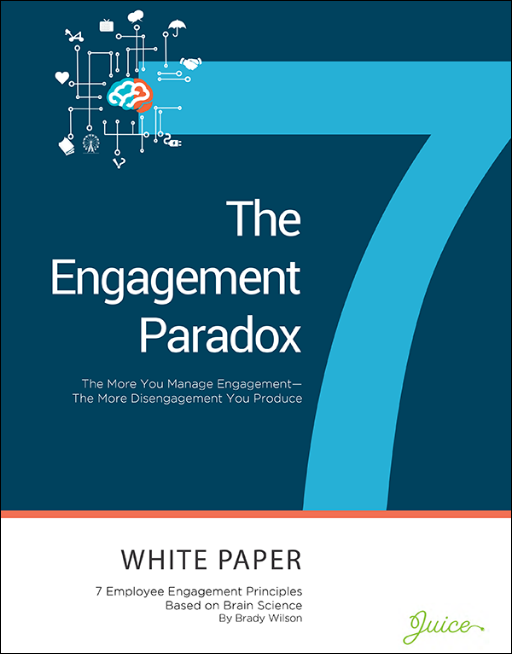
How to Motivate Your Employees: Meet Needs, Not Scores
Motivate Employees By Understanding The Emotional Brain
The key to unlocking motivation for employees lies in understanding the relationship between the emotional and rational facets of the human brain. Contrary to the belief that reason is in the driver’s seat, science shows us that emotions are the primary drivers of our decision-making processes. Recognizing the significance of this emotional influence is vital for leaders looking to unlock motivation for employees and foster an engaged and productive workforce.
Traditional employee engagement strategies, often fixate on numerical scores. By redirecting focus towards understanding and meeting employees’ emotional needs, leaders can pave the way for a cycle of healthy decisions, sustainable energy, and enhanced performance.
How can you unlock motivation for employees?
When you learn how to help employees get their needs met skillfully, it generates a cycle of healthy decisions, reduced interference, and sustainable energy to motivate your teams. Brady Wilson discusses the emotional brain and how it can power up performance.
Meeting Emotional Needs Unlocks Motivation For Employees
The brain makes decisions for emotional reasons, then justifies them with rational ones. The emotional brain acts as the inner arbiter in every decision we make. You may think reason is in the driver’s seat and emotion is in the backseat, offering a preference here and an opinion there. Nothing could be further from the truth.
Over 20 years of science shows us that when it comes to decision making, emotion is in the driving seat in ways we could hardly imagine. It’s not that reason isn’t involved, it clearly is, but simply to defend and justify the conclusion that emotion has already decided.
Why does this matter so much? Your employees have oxygen-like needs that feel vital and biologically urgent. They’re like the very air that we breathe. Picture this, you’re at the beach and everybody’s swimming. You see somebody out there in the distance, all of a sudden, they’re floundering and you can see they’re in trouble. Thank goodness the lifeguard’s right there, and swims out to rescue the person in distress.
They do something you or I might not do. They don’t engage the person face to face. They take a few extra precious seconds, go behind, lock their arms underneath, and start pulling back. Why do they do that? You know why. Because that person will take you down and you will become their personal floatation device.
Does it mean they have a character flaw? Are they a bad person? No, Mother Theresa would do the same thing. They have to have oxygen, so anything in front of them will be used to get their nose above the water.
Your employees have driving needs that are just as oxygen-like. The need for belonging, inclusion and acceptance. The need for security, clarity and predictability. The need for freedom and autonomy. The need for significance, to feel valued and respected. The need for meaning and making a difference. These are oxygen-like needs.
Understanding the Five Driving Needs
Improving or sustaining team and organizational performance requires that leaders foster an environment where people can deploy their strengths. Leaders who create a culture where people can skillfully get their driving needs met will generate the energy needed to fuel sustainable performance and transform employee engagement.
Read more: Five Driving Needs: A Guide to Fueling Productivity in the Workplace
Employee Engagement Strategies Must Focus in Discovering Employee Needs
Current engagement strategies focus more on fixing scores, than discovering employee needs. Unmet needs trigger a predictable reaction. De-energized employees with a stunted executive function, will act out in unskillful ways trying to get those needs met and take others down.
So think about these behaviors as a manager. They can be a splinter in your brain. What do they all have in common? Gossiping, complaining, resisting change, being overly analytical, not following through, taking unwise risks, unhealthy competition, taking credit for other people’s contributions, checking out, and being cynical and jaded.
If you listened carefully, what you’ve discovered is, “Aha, those are the five driving needs unmet.” Often in our gossiping, it’s a bid for rapport and connection. It’s the unskillful expression of an unmet need.
When you stop over-indexing on engagement scores, and learn how to help employees get their needs met skillfully, you preempt all that interference and entropy that depletes employee energy, spawns frustration, short circuits employee performance, erodes the employee experience, corrodes the customer experience and consumes your precious time.
When employees’ felt needs are met, it generates a cycle of healthy decisions, reduced interference, sustainable energy and powers up performance. The best motivation for employees? Meet needs, not scores.

The Engagement Paradox
This white paper offers a new path forward – one that blends the energy employees want with the customer experience and business results leaders need.
THE BOTTOM LINE
Without energy, your strategies are at risk
Transforming the way you engage with employees in today’s complex workplaces requires new approaches to leadership. Our customized learning solutions will help you grow leadership skills and fuel sustainable performance.
If you want more on this, check out our white paper, The Engagement Paradox which goes into how we can transform engagement and get the very best from our team.
Your content is only one click away.
Thanks for your interest in our content. We hope you find value in the time you invest with it. Click the button below and get immediate access to this truly valuable content.
Complete the form below and get instant access to this game-changing content.
Rest assured, we take your privacy seriously and will never sell, trade, or share your information with a third party.



